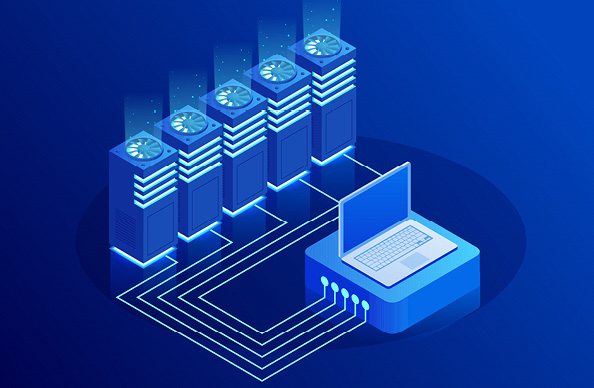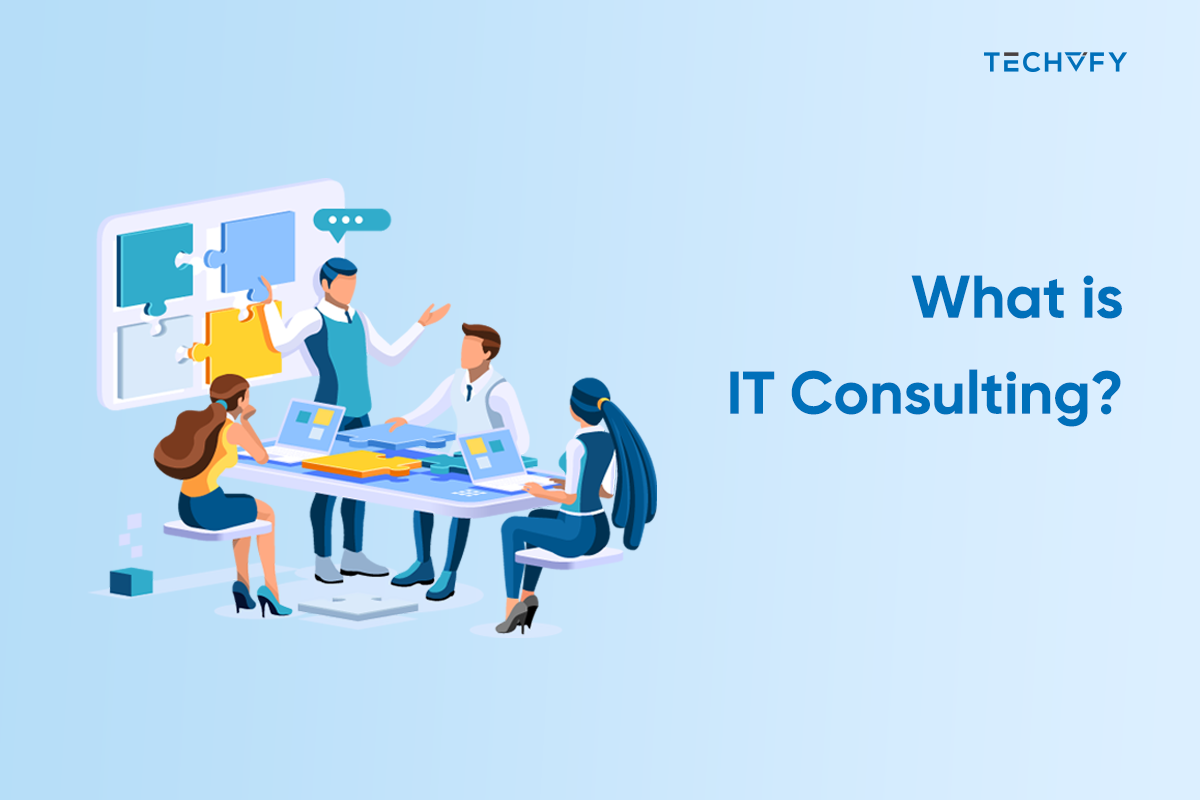Containerization vs Virtual Machine: Must Know Differences
- TECHVIFY Team
- 0 Comments
Virtualization and containerization are key methods for running applications on a computer system. Virtualization relies on virtual machines, while containerization utilizes containers as its core element. Each technology has its advantages and disadvantages.
This article will explore and compare the features of containerization vs virtual machine, aiming for clarity and conciseness.
What is Virtualization?
Virtualization is a technology that allows virtual versions of physical hardware, software, network resources, and storage devices to run simultaneously. It enables a single physical machine to run multiple virtual environments, typically known as virtual machines (VMs).
By abstracting the hardware through a layer of software called a hypervisor, virtualization makes it possible to divide the physical resources of a single computer—like CPU power, memory, and storage—among several virtual machines, each operating its own operating system and applications. This technology enhances computing resources’ efficiency, scalability, and cost-effectiveness by allowing for better utilization and management of hardware investments.

Pros
- Isolated Security: Virtual machines operate in complete isolation, acting independently. This setup ensures a VM is protected from exploits or interference from other VMs on the same host. While a single VM can be compromised, it remains isolated, preventing any spread of the issue to adjacent VMs.
- Interactive Development: Unlike containers with static setups, virtual machines offer dynamic development environments. A VM functions like a new computer after setting up the basic hardware requirements. Developers can install software directly and use snapshots to capture and revert to specific states, facilitating the creation of additional VMs with the same setup.
Cons
- Slow Iteration: Building and updating virtual machines is slow due to their comprehensive system nature. Making changes to a VM snapshot and ensuring it works as intended can be time-consuming.
- High Storage Costs: VMs require significant storage space, often expanding to several gigabytes. This can quickly lead to storage shortages on the host machine.
What is Containerization?
Containerization is a lightweight form of virtualization that packages software code along with all its dependencies—such as libraries, binaries, and configuration files—into a single, cohesive unit called a container. Unlike traditional virtual machines that virtualize an entire operating system, containers share the host system’s kernel but maintain separate execution environments for each container. This approach allows for efficient, scalable, and isolated execution of applications, ensuring that they work seamlessly across different computing environments.
Containerization simplifies deployment, enhances portability, and improves the consistency of running software applications, making it a popular choice for developing, shipping, and running applications in various environments.

Pros
- Fast Iteration: Containers are lightweight and include only essential software, making them quick to update and improve.
- Rich Ecosystem: Many container systems provide access to a public repository of ready-to-use containers. These repositories offer a variety of common software applications, such as databases or messaging systems, allowing for instant download and deployment, which saves development teams time.
Cons
- Vulnerability to Shared Host Exploits: Since containers share the same hardware beneath the OS layer, a vulnerability in one container could potentially compromise the shared hardware.
- Security Risks of Public Images: Using pre-built containers from public repositories poses a risk. These containers might contain security flaws or be susceptible to attacks, posing a threat to security.
Our latest articles:
Difference Between Virtualization and Containerization
|
Aspect |
Virtualization |
Containerization |
|
Isolation Level |
Offers full isolation from both the host OS and other virtual machines (VMs). |
Provides a more lightweight form of isolation from the host and other containerscompared to VMs, lacking the same level of security separation. |
|
Operating System Requirements |
Requires a full operating system, including the kernel, which consumes more CPU, memory, and storage. |
Only needs the user-mode components of an OS, allowing for a minimal setup that uses fewer resources. |
|
Compatibility with Guest OS |
Capable of running nearly any operating system within the VM. |
Restricted to operating apps that support the host operating system’s version. |
|
Deployment Method |
VMs are deployed using hypervisor software. |
Containers are deployed using container management tools like Docker or orchestrated with systems like Kubernetes for managing multiple containers. |
|
Persistent Storage Solutions |
Utilizes Virtual Hard Disks (VHD) for single VM storage or Server Message Block (SMB) file shares for multi-server shared storage. |
Employs local disk storage for individual nodes or SMB for shared storage across multiple nodes or servers. |
|
Load Balancing Approach |
Achieves load balancing by distributing VMs across different servers within a failover cluster. |
Utilizes orchestrators to dynamically adjust container distribution across cluster nodes based on load and availability. |
|
Networking Capabilities |
Employs virtual network adapters for connectivity. |
Provides a container-specific view of a virtual network adapter, offering slightly reduced virtualization capabilities compared to VMs. |
Looking for a Software Development Company?
TECHVIFY is the best option for you. Book a free consultation to get an accurate time and cost estimation for your project.
How do they work?
Let’s compare virtual machines to containers in terms of their working process:
Virtualization
Virtualization is enabled by hypervisor software, which can be installed either on top of an operating system or directly onto hardware. Hypervisors allocate physical resources to create virtual environments.
When a virtual machine (VM) needs more resources, the hypervisor requests these from the physical system and updates them accordingly. There are two main types of hypervisors: Type 1 (Bare Metal) and Type 2 (Hosted).
A key benefit of virtualization is running multiple operating systems on a single piece of hardware. Each VM operates its guest OS, performing start-up tasks like bootstrapping and loading the kernel. However, security measures prevent these guest OSs from gaining full access to the base OS.

Containerization
Containerization involves packaging software into containers that operate on a host operating system (OS). A single host can run multiple containers simultaneously. In environments like microservice architectures, containers operate on a minimal, isolated process that remains inaccessible to others.
The structure of containerized architecture can be visualized as follows:
- The base layer comprises physical infrastructure, including CPU, disk storage, and network interfaces.
- Above this layer is the host OS and its kernel, which serves as a mediator between the OS software and the hardware resources.
- The container engine and a minimal guest OS are layered on top of the host OS.
- The topmost layer contains the binaries, libraries for each application, and the applications themselves, running in their isolated spaces.
The concept of containerization originated from a Linux functionality known as “cgroups”, which allows for the isolation and management of resource usage by OS processes. This includes specifying limits on CPU and RAM usage or the number of threads a process can use within the Linux kernel. Cgroups evolved into Linux Containers (LXC), offering enhanced features for isolating components like routing tables and file systems in separate namespaces.
Which One Should You Use?
For Development and Testing: Containers are often preferred due to their lightweight nature and quick startup times, making them ideal for continuous integration/continuous deployment (CI/CD) pipelines.
For Running Multiple Applications on the Same Hardware: Containers can maximize resource utilization and efficiency.
For Full Isolation and Security: VMs might be the better choice if your application requires stringent security measures or needs to be isolated from other applications.
For Legacy Applications: VMs are typically used for legacy applications that require a specific operating system environment or have complex dependencies.
Overall, your priority for containerization vs VMs is efficiency, scalability, and rapid deployment. If you need full isolation, run multiple operating systems, or deal with legacy applications, VMs might be more suitable. Often, organizations use a combination of both to leverage the advantages of each technology based on different project requirements.
Conclusion
Choosing between Containerization vs Virtualization depends on your specific requirements. Virtualization is best for applications needing high security and isolation, running multiple OSes, or dealing with legacy systems. Containerization excels in efficiency, speed, and ease of management, and it is ideal for modern applications and CI/CD workflows.
Understanding these technologies is key to enhancing your operational efficiency and competitiveness. TECHVIFY specializes in navigating these complex choices, offering premier software development services tailored to your needs.
Contact TECHVIFY for expert guidance on ensuring your digital assets perform optimally and securely. Let us help you find the right technology solution for your business.
TECHVIFY – Global AI & Software Solutions Company
For MVPs and Market Leaders: TECHVIFY prioritizes results, not just deliverables. Reduce time to market & see ROI early with high-performing Teams & Software Solutions.
- Email: [email protected]
- Phone: (+84)24.77762.666





